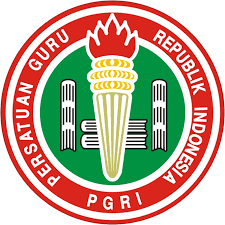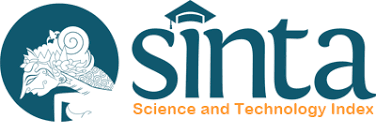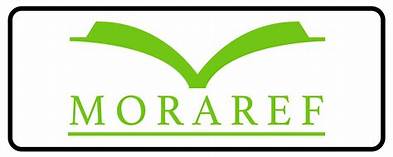Author Guidelines
The Author’s Guideline of Santhet: (Jurnal Pendidikan, Sejarah dan Humaniora)
1. Introduction
Santhet: (Jurnal Pendidikan, Sejarah dan Humaniora) is a national scientific journals are open to seeking innovation, creativity and novelty. Santhet: (Jurnal Pendidikan, Sejarah dan Humaniora) is a peer review journal published by Universitas PGRI Banyuwangi. The aim of the journal is to facilitate scientific publication of the results of researches in Indonesia and participate to boost the quality and quantity of research for academics and researchers. Santhet: (Jurnal Pendidikan, Sejarah dan Humaniora) is published every April and Oktober by publishing research results and critical analysis studies in the field of Historical Education,History, Humanities
2. The Manuscript General Guidelines
The manuscript text general guidelines are as follows:
- The manuscript is the authentic research result that has not been published yet in other publication media or publishing houses.
- Manuscript accepted standard written in Indonesian;
- The manuscript text tought to be written as this article template. The article is written on A4-size paper (210x297 mm), with custom margins as follows: left 40 mm, right 30 mm, bottom 30 mm and top 30 mm, Arial theme font, 12pt font size, and 1.5 lin-spacing.
- The manuscript is typed using Microsoft Word program on A4 paper, around 3,000-5,000 words including figures, tables and references.
- The manuscript does not contain any plagiarism element. The editorial board will directly reject the text that indicates plagiarism. We use plagiarism software to check your manuscript.
- The manuscript consists of five main headings: Pendahuluan (Introduction); Metode (Methods); Hasil (Results; Pembahasan (Discussion); Keimpulan dan Saran (Conclusions and Suggestions); Daftar Pustaka (References);
- Title of the article should be as short as possible, and should represent the content of the manuscript;
- Author names are written under the title, followed by author affiliation and e-mail address;
- Abstract written in Indonesian and English. Abstract not exceeding 200 words, write a narrative consists goals / objectives, methods, and findings of the research / writing;
- Keywords: words or phrases that are important, specific, or representative for articles and consisting of 3-6 words;
- The manuscript must be written in the following template;
3. The Guidelines for the Manuscript Body Text
The title of the manuscript: The title should be informative and be written both briefly and clearly. It cannot diverse multi interpretations. It has to be pinpoint with the issues that will be discussed. The beginning word is written in capital case and symmetrically. The article title does not contain any uncommon abbreviation. The main ideas should be written first and followed then by its explanations. The article title should be written within twenty words, 12pt-sized font, with the bold selection and in the center text format.
Abstract: The abstract has to be written within 200 words maximum and followed by with three to five keywords and arranged alphabetically. Abstract must contain research objectives, methods, result, conclusion and limitation (optional). Abstract written in 1 space line and 11 font size Arial.
Introduction: The introduction must contain (sortly and consecutively) a general background and a literature review (state of the art) as the basic of the brand new research question, statements of the brand new scientific article, main research problems, and the hypothesis. In the final part of the introduction, the purpose of the article writing should be stated. They should be represented in the literature review to show the brand new of the scientific article.
Methods: The method explains how the research is conducted, including research design, data collection, research instrument and analytic methods. This part should be narated.
Findings and Discussion: This part consists of the research results and how they are discussed. The results obtained from the research have to be supported by sufficient data. The research results and the discovery must be the answers or the research hypothesis or research question stated previously in the introduction part.
Conclusion: This is the final part containing conclusions, limitations and recommendations. The conclusions will be the answers of the hypothesis or research question, the research purposes and the research discoveries. The conclusions should not contain only the repetition of the results and discussions. It should be the summary of the research results as the author expects in the research purposes or the hypothesis. Research limitations and recommendations contain deficiency in the research and suggestions associated with further ideas from the research.
Acknowledgement: Acknowledgements to those who support the research (sponsors and respondents). Families and supervisors are not allowed in this section.
References: All the references that used in the article must be listed in this part. In this part, all the used references must be taken from primary sources (scientific journals and the least number is 70% from all the references) that published in the last ten years. Each article should has at least ten references and cite Jurnal Kejaora (Kesehatan Jasmani dan Olah Raga) articles, at least 3 articles.
4. The Guidelines for the Citations and References
All the served data or quotes in the article taken from the other author articles should attach the reference sources. The references should use a reference application management such as Mendeley, End Note, or Zotero. The writing format that used in Jurnal Kejaora (Kesehatan Jasmani dan Olah Raga) follows the format applied by APA 6th Edition (American Psychological Association).
5. The Online Submission Manuscript Guidelines
The manuscript text must be submitted by one of two systems (the Second procedure is more preferable):
- The document should submitted by Online Submission System in the Jurnal Kejaora (Kesehatan Jasmani dan Olah Raga) website.
- Firstly, the author should register as either an author or reviewer (checking role as author or reviewer) in the “Registerâ€.
- After the registration step is completed, log in as an author, click in “New Submissionâ€. The article submission stage consists of five stages, such as: (1). Start, (2). Upload Submission, (3). Enter Metadata, (4). Upload Supplementary Files, (5). Confirmation.
- In the “Start†column, choose Journal Section (nearby Volume and Issue will publish), check all the checklists.
- In the “Upload Submission†Columns, upload the manuscript files in MSWord format in this column.
- In the “Enter Metadata†columns, fill in with all the author data and affiliation. Including the Journal Title, Abstract, Keywords, and References.
- In the “Upload Supplementary Files†columns, the author is allowed to upload supplementary files, the statement letter, or any other else.
- In the “Confirmation†columns, if the data you entered are all correct already, then click “Finish Submissionâ€.
- If the author has difficulties in the submission process through the online system, please contact Santhet: (Jurnal Pendidikan, Sejarah dan Humaniora) editorial team at santhetjurnal@gmail.com




























